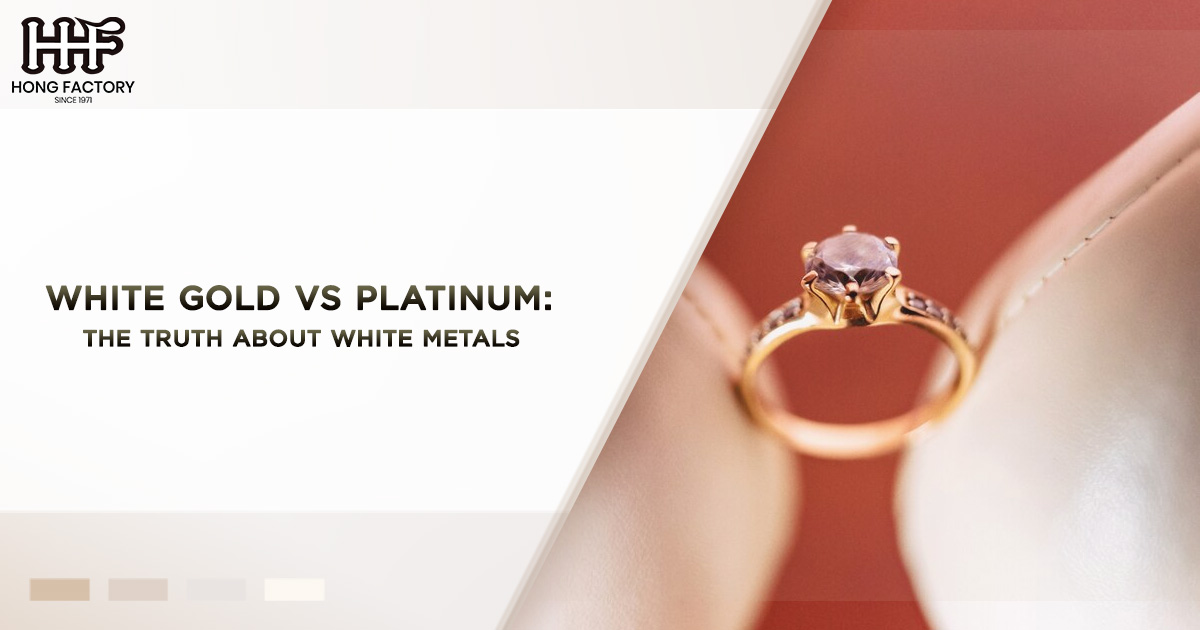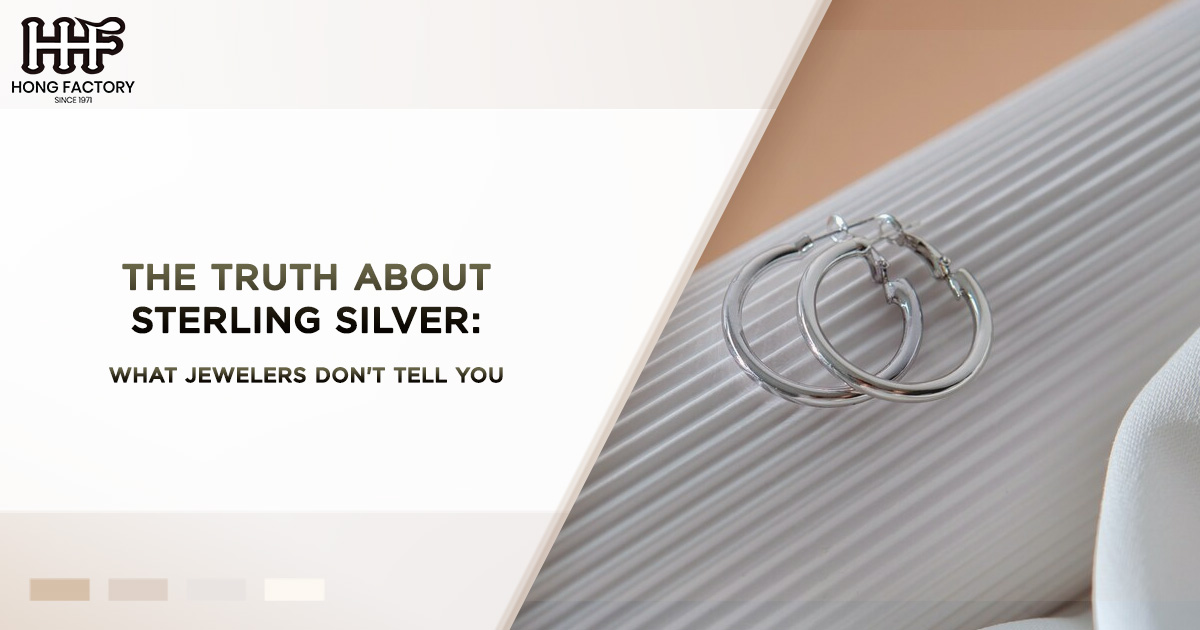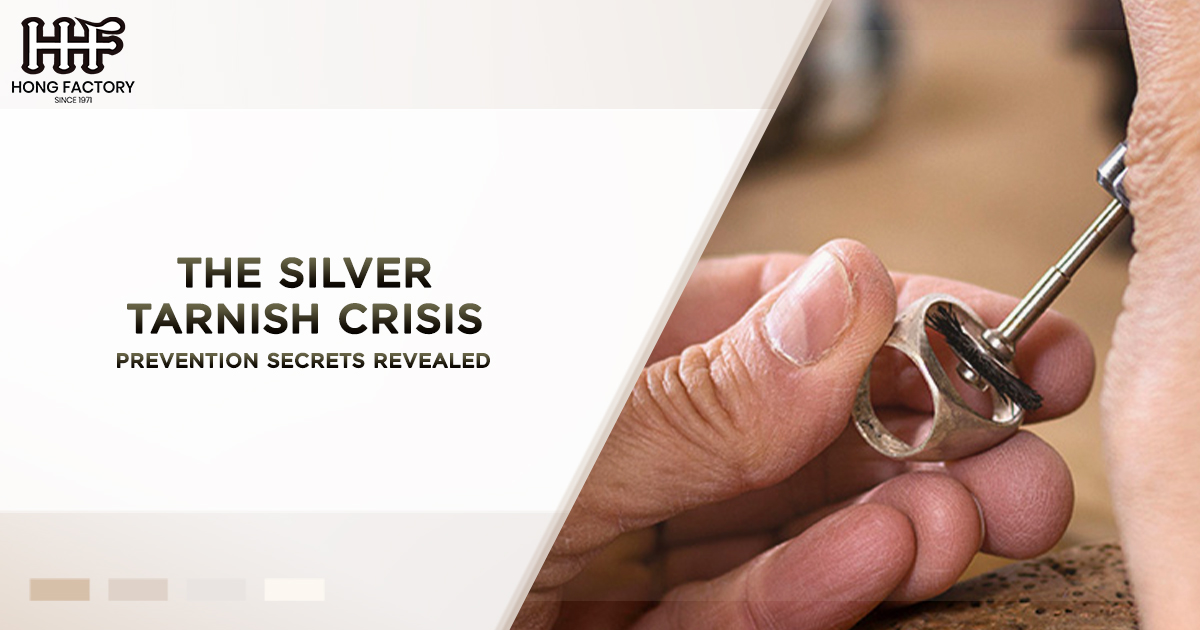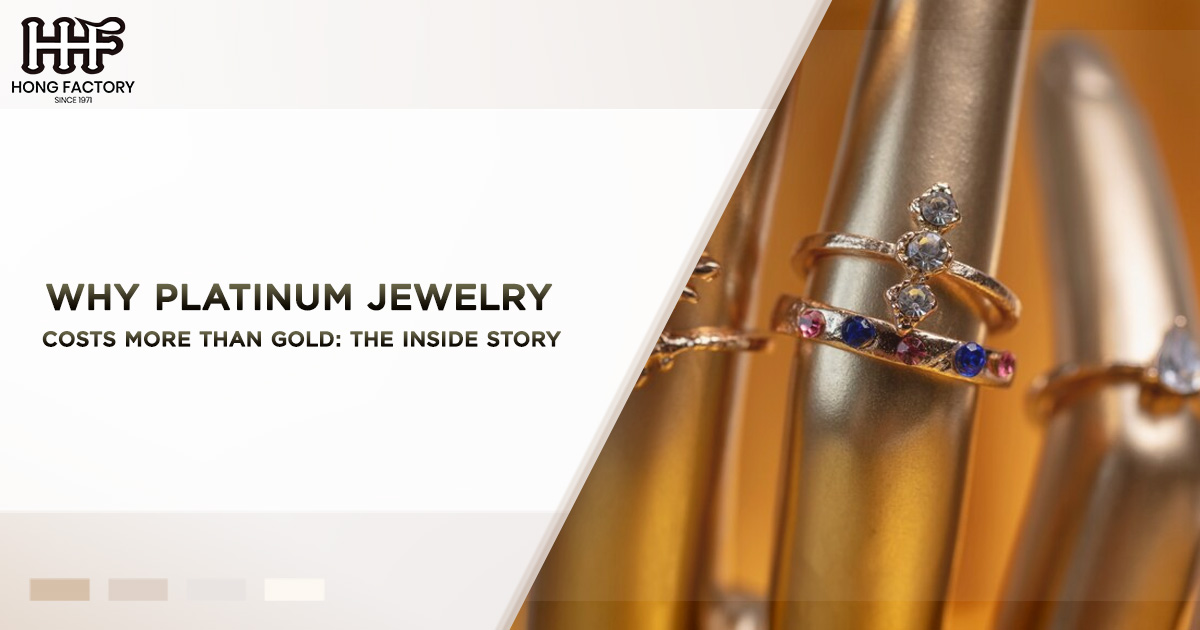When it comes to fine jewelry, few materials rival the elegance and sophistication of white metals. Among the most sought-after are white gold and platinum, both of which exude timeless beauty and luxury. However, while they may appear similar at first glance, these two metals are distinct in composition, durability, care, and cost. In this article, we’ll delve deep into the differences and similarities between white gold and platinum, explore the role of rhodium plating, and provide a detailed metal comparison to help you make the best choice for your jewelry.
What is White Gold ?
White gold is not a naturally occurring metal but rather an alloy created by combining pure yellow gold with other white metals such as nickel, palladium, or silver. The blending of these metals gives white gold its silvery-white appearance and enhances its strength, as pure gold is too soft for most jewelry applications.
One defining characteristic of white gold is its rhodium plating. Rhodium, a rare and highly reflective metal from the platinum family, is often used to plate white gold to achieve its bright, mirror-like finish. This rhodium layer not only enhances the appearance of white gold but also provides an extra layer of protection against tarnishing and scratches. However, rhodium plating can wear off over time and may require periodic reapplication to maintain the jewelry’s luster.
What is Platinum ?
Platinum is a naturally white metal that has been prized for centuries for its rarity, purity, and durability. Unlike white gold, platinum requires no plating to achieve its white sheen. It is denser and heavier than most other metals, which adds a luxurious weight to platinum jewelry.
Platinum is also hypoallergenic, making it an excellent choice for people with sensitive skin or metal allergies. Because it is highly resistant to corrosion and tarnish, platinum is often chosen for heirloom-quality pieces that are meant to last for generations.
Rhodium Plating – The Secret Ingredient to White Gold’s Shine
Rhodium plating plays a crucial role in the appearance and longevity of white gold. While white gold alloys are naturally off-white or slightly yellowish in color, rhodium plating gives them the bright, polished finish that consumers often associate with white gold.
However, it’s important to note that rhodium plating is not permanent. Over time, as jewelry is exposed to wear and tear, the rhodium layer can wear off, revealing the underlying gold alloy. This is especially common for rings and other pieces that experience frequent contact with hard surfaces. When this happens, the jewelry can take on a slightly yellowish hue, prompting many owners to have their pieces re-plated every 1–2 years.
Platinum, on the other hand, does not require rhodium plating because it is naturally white. While it can develop a patina over time—a soft, matte look that some people find appealing—this can be polished away if a brighter appearance is desired.
Metal Comparison – White Gold vs Platinum
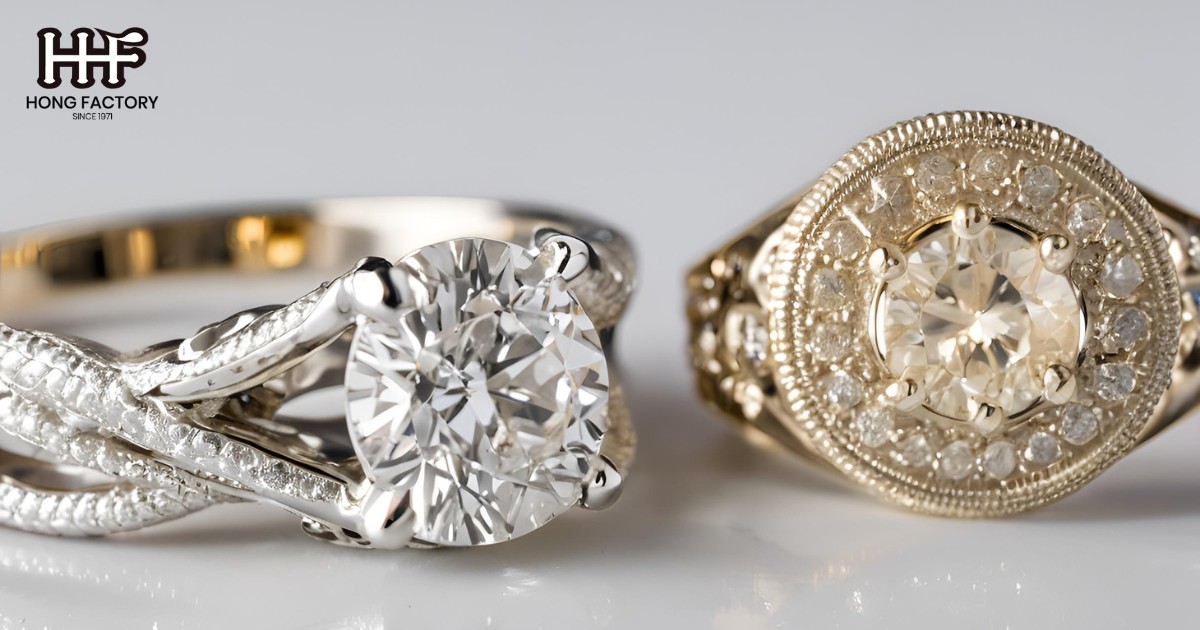
When choosing between white gold and platinum, it’s important to consider several factors, including appearance, durability, maintenance, cost, and personal preference. Let’s break down these key aspects
1. Appearance
- White Gold : Thanks to rhodium plating, white gold has a bright, reflective finish that is similar to platinum. However, as the rhodium wears off, white gold may develop a slightly yellowish tint unless it is re-plated.
- Platinum : Platinum has a natural white color that doesn’t require plating. Over time, it develops a patina, which gives it a unique, antique look. Some people prefer this natural patina, while others opt to have their platinum jewelry polished to restore its original shine.
2. Durability
- White Gold : White gold is durable but not as strong as platinum. The rhodium plating adds some scratch resistance, but once it wears off, the underlying gold alloy is softer and more prone to scratches and dents.
- Platinum : Platinum is one of the most durable metals used in jewelry. Its density and strength make it highly resistant to damage, and even when scratched, the metal is merely displaced rather than lost. This makes platinum ideal for everyday wear and long-lasting pieces.
3. Maintenance
- White Gold : Maintaining white gold requires periodic rhodium re-plating to keep its bright white finish. Without re-plating, the jewelry may lose its luster over time.
- Platinum : Platinum is low-maintenance compared to white gold. While it may develop a patina, this can be easily polished away if desired. Platinum’s natural durability means it requires less frequent care.
4. Hypoallergenic Properties
- White Gold : White gold often contains nickel, which can cause allergic reactions in some individuals. While nickel-free white gold alloys are available, they are less common and may come at a higher price.
- Platinum : Platinum is naturally hypoallergenic, making it a safer choice for people with metal sensitivities.
5. Cost
- White Gold : White gold is generally more affordable than platinum, as gold is less rare and the manufacturing process is less labor-intensive. However, the need for rhodium re-plating can add to the long-term cost of ownership.
- Platinum : Platinum is significantly more expensive than white gold due to its rarity, density, and higher production costs. However, its durability and low maintenance requirements can make it a worthwhile investment for those seeking a lifetime piece.
Which Metal Should You Choose ?
The choice between white gold and platinum ultimately comes down to personal preference, budget, and lifestyle. Here are some scenarios to help you decide
Choose White Gold if
- You’re looking for a more affordable option with a bright, reflective finish.
- You don’t mind periodic maintenance, such as rhodium re-plating.
- You want a lightweight metal that feels less heavy on your hand or wrist.
Choose Platinum if
- You prioritize durability and want a metal that will last a lifetime with minimal maintenance.
- You have sensitive skin or metal allergies and need a hypoallergenic option.
- You prefer the prestige and weight of a rare, luxurious metal.
Conclusion
White gold and platinum are both stunning choices for fine jewelry, but they cater to different needs and preferences. White gold, with its rhodium plating, offers a brilliant shine at a more accessible price, though it requires regular maintenance to retain its beauty. Platinum, on the other hand, is a natural white metal that boasts unmatched durability, hypoallergenic properties, and a timeless appeal—albeit at a higher cost.
By understanding the differences outlined in this metal comparison, you can make an informed decision that aligns with your style, budget, and long-term expectations. Whether you opt for white gold or platinum, both metals represent a commitment to quality and elegance that will leave a lasting impression.
